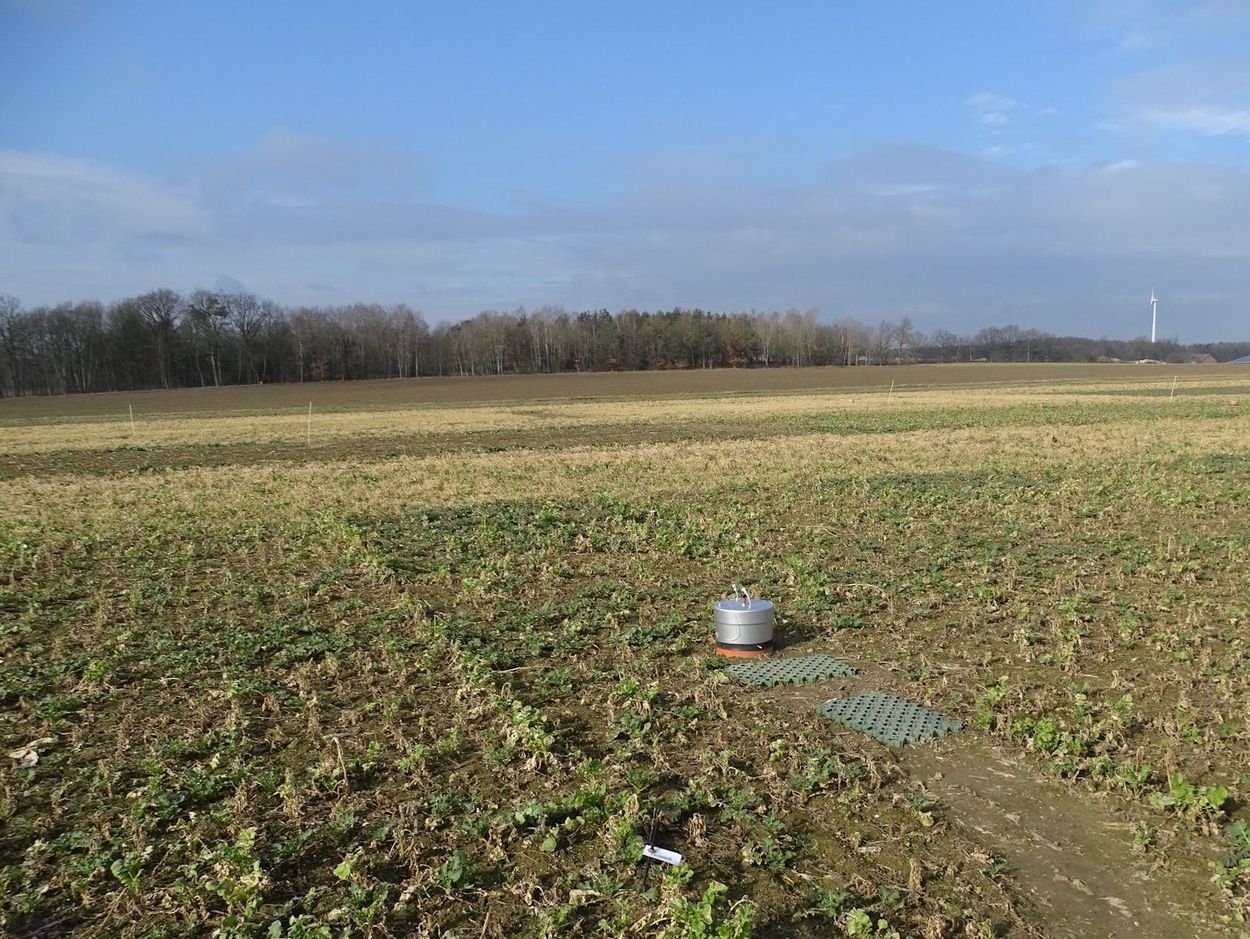This publication presents data from field experiments conducted at two sites in northern Germany (Kiel, Uelzen) over two consecutive years (2018 and 2019) with the same treatments (saia oat, winter rye, spring vetch; bare fallow as control) established and monitored from sowing of cover crops to the harvest of the subsequent main crop (silage maize). The study investigated the influence of cover crop species (saia oat, winter rye, spring vetch) on N2O emissions and soil mineral nitrogen, and modeled the development of soil organic C stocks for a typical crop rotation (cover crop or fallow - silage maize - winter wheat - rapeseed - winter wheat). Under non-legume cover crops (saia oat and winter rye), mineral N in the topsoil decreased over autumn and winter. However, this did not lead to reduced cumulative N2O emissions over the cover crop period, as the reduced emissions during the growth phase of the cover crops were offset by increased emissions during the mineralization of the dead cover crop biomass after frost and incorporation. Increased cumulative N2O emissions in the subsequent maize period compared to the variants with winter fallow indicated that the incorporated cover crop biomass promoted N2O emissions under the following crop (significant only for non-legumes). Also, annual and yield-related N2O emissions were significantly higher in the variants with non-legume cover crops compared to fallow. The increase in annual N2O emissions of 0.84 ± 1.06 kg N2O-N ha-1 yr-1 was only partially compensated by the calculated potential for mitigation of indirect N2O emissions of 0.52 ± 0.14 kg N2O-N ha-1 yr-1, but additional benefits were shown in the form of an accumulation of soil carbon of 40-60 kg C ha-1 yr-1 over a period of 50 years and potential N fertilizer savings.
Overall, the results of this study indicate that the cultivation of winter cover crops had both positive and negative effects on greenhouse gas emissions. When considering direct and indirect N2O emissions, C sequestration, and emissions from fertilizer demand together, there was no generalizable positive or negative effect of cover crops on the net exchange of CO2-eq. Net effects can vary greatly depending on site conditions, soils, cover crop properties, and management. Overall, the results suggest that the cultivation of winter cover crops per se is not an effective measure for mitigating greenhouse gas emissions in fertilized arable farming systems. However, it offers many valuable benefits in the areas of soil and groundwater protection, soil organic matter accumulation, soil fertility, and biodiversity. Therefore, the relevant question is no longer whether the cultivation of cover crops contributes to climate protection, but rather how their positive effects can be optimized at different sites and in different cropping and fertilization systems. The site- and management-dependent risk of NO3 leaching, the general N availability in the cropping system, and the matching of cover crop and fertilizer N inputs to the needs of the subsequent crops in terms of their quantity and timing are essential factors that must be taken into account if climate mitigation effects are to be optimized.

![[Translate to English:] [Translate to English:]](/media/_processed_/6/4/csm_titel_CO2Kampagne8_afeea2273e.png)
![[Translate to English:] [Translate to English:]](/media/_processed_/4/1/csm_titel_93px_CO2Kampagne8_9b0f3354d4.png)





